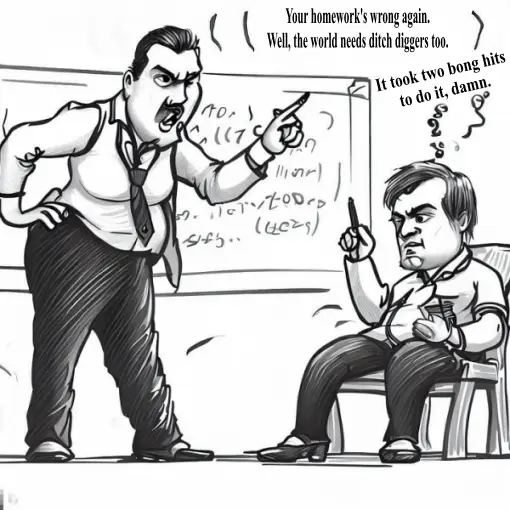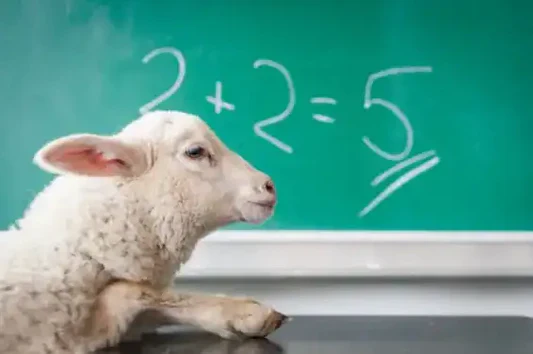A great deal of controversy surrounds online education, focused on comparisons with traditional education. There can be no doubt that online education has made higher learning more accessible, lowered cost, and increased learning flexibility. The controversy centers on the question of traditional education standards being lowered to create online education’s benefits. Despite the many advantages to online school, traditional education still maintains higher standards.
Standards of Education
Higher standards for education are typically measured by specific factors, such as quality, cost, and student success. The first factor showing the reduced standards of online education can be seen through the attribute of quality. Online education has lower standards evidenced by lower quality education. This problem stems from the growth of for-profit schools which lower admission standards to garner the largest market segment possible. In so doing, individuals who did not have the skills or education experience to attend traditional schools are often accepted without prejudice. This enrollment policy leaves unprepared students unable to perform. As a result, the standards for passing are often lowered in order to maintain grades and attendance.
Teachers also recognize this lapse of standards; “A recent survey of professors found that nearly half of those who had taught an online course felt that online students received an inferior education. Plenty of students also feel burned (Tucker, 2001).” The lack of standard severely reduces the quality of education because the students are not be pushed much beyond their current levels of education and there is little expectation placed on the students increasing their educational position (Fox, 1998). While it is possible for some learning to take place through the distance education environment, the system lacks a fullness of learning due to its easier nature (Fox, 1998).
As a result of the lowering of work and study standards, grade statistics are not representative of education quality. In this way, one of the most important measures of quality becomes irrelevant when viewed by potential students or educators. Therefore, online education results are rendered less meaningful because they are wrongly compared with the same standards as traditional education (Tucker, 2001). The reality of this grading issue is that even if the grades reflected by the online institution are similar in outcomes to the grades reflected by traditional institutions, these grades will not be an honest reflection of the accomplishment of students within the online education environment.
Another area that reflects the lowering of standards in the online education environment is viewed through the cost of education. A little known fact is that the cost of education is directly proportional to the quality of education. This fact has been confirmed in a multitude of studies and from this research several determinants have been identified in affecting this outcome. These determinants include: more creative help and higher standards for educators.
Higher priced schools can afford more creative teachers and faculty. Higher pay for teachers increases competition and potentially better applicants (Dolton, 2011). In this way, schools can be very selective in their hiring process because the higher pay they offer increases their pool of applicants.
Higher pay also raises the standard for teachers and thereby increases quality of education (Dolton, 2011). Institutions that pay higher salaries to teachers can expect more from the teachers in so far as teaching curriculum. The higher paid teachers are thereby held to a higher standard and thus their students are also held to a higher standard.
The loss of quality in education is diminished severely by the lack of cost in the online education environment. This cost reduction is seen in the costs of courses, that are lower than traditional tuitions. As well, materials such as books and study aids are also severely discounted (Burian-Fitzgerald, 2009). As a result, the reduction is cost forces schools to drive down other areas of expense such as teacher salary. For this reason, online teachers are significantly underpaid compared to their traditional counterparts (Burian-Fitzgerald, 2009). By underpaying teachers in this manner, many creative teachers will not become potential applicants. As well, teachers that are of strong talent are not able to function with the degree of freedom necessary to be effective teachers. This is due to the fact that the underpaid teacher must work larger hours in order to make the equal money of traditional teachers and cannot afford to spend time giving additional assistance to students (Burian-Fitzgerald, 2009).
The lower standards of online education are also evident in the success rates for online students. The success rates for many online students after graduation are low. These success rates are marked by three elements including; the default rates on student loans, lack of acceptance of online degrees, and reputation of online schools.
The default rates of student loans show a large failure of education. Often graduates of online schools are left in worse financial situations than when they began school. Simply speaking, graduates of online schools often find they are unable to advance to new career levels and therefore earn less than expected. As a result of their economic and career positions remaining unchanged, these graduates often cannot afford their student loan payments (Pilon & Korn, 2011). This reality often has the negative impact of making the individuals financial situation worse.
Another area of reduced success rates for online education can be seen through the view f employers. The standards of online schools make many potential employers weary of hiring online graduates. Almost a quarter of all employers believe that online education is still too new to be considered as valuable to the workplace (Zupek, 2010). Other employers perceive the reputation of online schools to be a large factor. Because some online schools have operated fraudulently, this has had the negative impact of destroying the reputation of other reputable schools. As a result, many schools are considered diploma mills, and have been sued for having provided poor standards of education (Pilon and Korn, 2011). These issues have made online degrees widely unaccepted by many organizations therefor jobs are not easily obtained by new graduates (Zupek, 2010).
For the time, online education remains substandard to traditional education due to the lack of standards. However this is not a static situation, as each year online education continues to increase its standards and effectiveness. It would be unfair to say that the current situation is unchangeable or that it cannot prove. The fact that online education, in its current state, is a relatively new phenomenon, dictates that change is inevitable.
The future of education seems to be entrenched in online accessibility. Today, there are online high schools in many states and most colleges are building online education programs. The savings of online versus brick and mortar schools cannot be ignored and this explains a great deal of the online education movement. As well, the profit potential from online education is incredible and this is another factor that has pushed this form of education. The ability to accept larger numbers of students indiscriminately allows online schools to make large amounts of profit through mass sales. There can be no denying that this is a driving force in the continued expansion of online education. These advantages of online education seem to spur the movement forward along with increasing its efficiency. There can be no doubt that the standards of online education will continue to change and improve over time. The future of online education success will hinge largely on its ability to balance standards with admission.
Burian-Fitzgerald, M. (2009). Average teacher salaries and returns to experience in charter schools . Retrieved from http://ncspe.org/publications_files/OP101.pdf
Dolton, P. (2011). Teachers’ pay and pupil performance.CentrePiece Magazine, 16(2), 352.
Frontline (2009) College Inc. KCET 8:00pm March 6, 2012
Fox, J. (1998). Distance Education: is it good enough? The University Concourse, 3(4), 3–5.
Pilon, M., & Korn, M. (2011, February 4). Student-loan default rates worsen. Retrieved from http://online.wsj.com/article/SB1000142405274870470930457612428047368414 2.ht ml
Tucker, S. (2001). Distance education: Better, worse, or as good as traditional education?. Retrieved from http://www.westga.edu/~distance/ojdla/winter44/tucker44.html
Zupek, R. (2010, March 29). Employers on online education. Retrieved from http://www.cnn.com/2010/LIVING/worklife/03/29/cb.employers.online.education /index.html
Photo by Gabriel Benois on Unsplash
 Question? Comment? Rebuttal?
Question? Comment? Rebuttal?Copy the article's title or link to send with your response.








